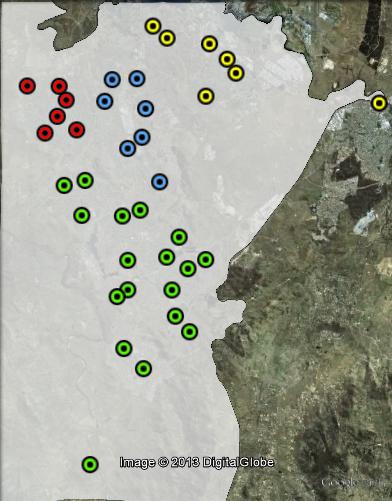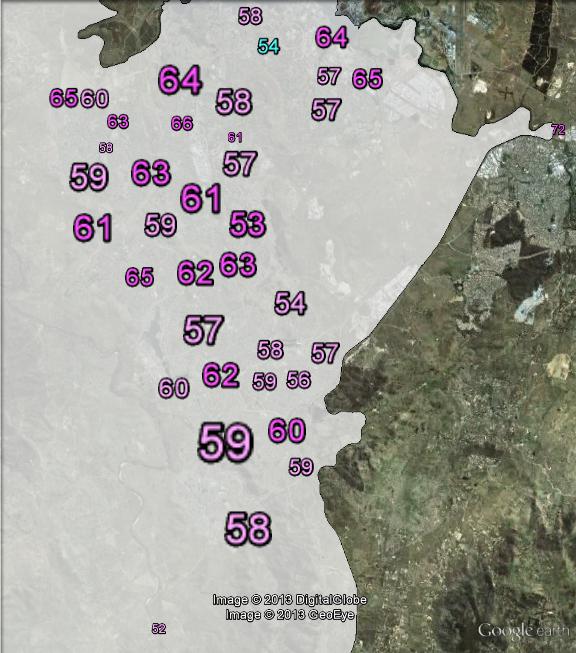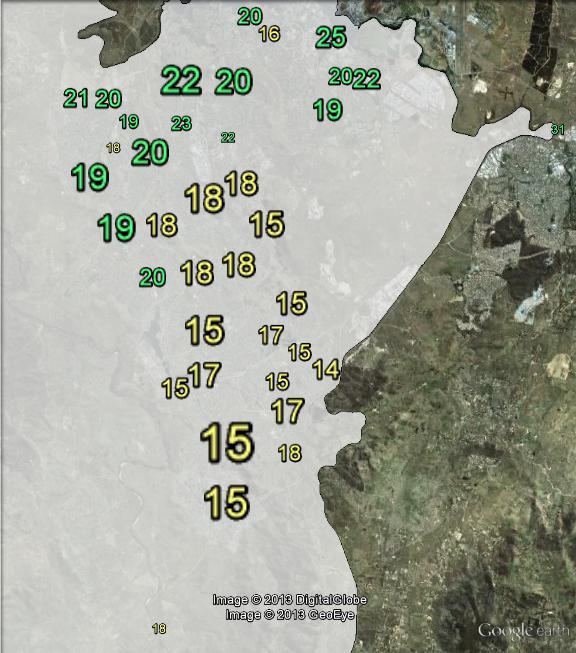ALP 9.2%
Incumbent MP
Gai Brodtmann, since 2010.
Geography
Canberra covers the southern suburbs of Canberra and the southern parts of the ACT. The two ACT electorates are neatly divided along the Molonglo River and Lake Burley Griffin, with Canberra covering the Parliamentary Triangle, Woden, Tuggeranong and the southern village of Tharwa.
History
The Australian Capital Territory first elected an MP from 1949 onwards, although this MP was only given full voting rights in 1968. Canberra was created in 1974 when the ACT gained a second seat, and the existing electorate was divided into Fraser and Canberra. The ACT gained a third electorate, Namadgi, at the 1996 election. Canberra has usually been a safe Labor seat, with a few exceptions.
The Liberal Party won the seat at the 1975 and 1977 elections, before it returned to the ALP under Ros Kelly in 1980. Kelly held the seat until 1995, when she resigned from Parliament. The by-election was won by Liberal candidate Brendan Smyth with a 16.2% swing.
The 1996 election saw a redistribution of the territory, with Canberra shifting from a southern electorate to a central electorate. Canberra was won by ACT Senator, and Minister for Trade, Bob McMullan. Smyth ran in the newly-created seat of Namadji, and was defeated by the ALP”s Annette Ellis.
The 1998 election saw the ACT’s seat entitlement return to two, and Canberra returned to the southern parts of the ACT. McMullan moved to Fraser, and sitting Member for Namadgi Annette Ellis was elected in Canberra. Ellis was re-elected in 2001, 2004 and 2007.
In 2010, Ellis retired and the seat was won by Gai Brodtmann.
Candidates
- Tom Sefton (Liberal)
- Julie Melrose (Greens)
- Tony Hanley (Palmer United Party)
- Damien Maher (Bullet Train)
- Gai Brodtmann (Labor)
- Nicolle Burt (Secular Party)
Assessment
Canberra is a safe Labor seat.
2010 result
| Candidate | Party | Votes | % | Swing |
| Gai Brodtmann | ALP | 49,608 | 44.23 | -6.87 |
| Giulia Jones | LIB | 41,732 | 37.21 | +2.08 |
| Sue Ellerman | GRN | 20,816 | 18.56 | +5.61 |
2010 two-candidate-preferred result
| Candidate | Party | Votes | % | Swing |
| Gai Brodtmann | ALP | 66,335 | 59.15 | -2.67 |
| Giulia Jones | LIB | 45,821 | 40.85 | +2.67 |

Booth breakdown
Booths have been divided into four groups, based on the four districts in southern Canberra: Tuggeranong, Woden Valley, Weston Creek and South Canberra (which covers those suburbs closest to Lake Burley Griffin).
The ALP won a majority in all four areas, varying from 58.5% in South Canberra to 61.6% in Weston Creek.
The Greens vote varied from 16.5% in Tuggeranong to 20.7% in South Canberra.
| Voter group | GRN % | ALP 2PP % | Total votes | % of votes |
| Tuggeranong | 16.49 | 59.43 | 41,892 | 37.35 |
| Woden Valley | 19.22 | 59.50 | 16,432 | 14.65 |
| Weston Creek | 19.59 | 61.62 | 11,922 | 10.63 |
| South Canberra | 20.65 | 58.53 | 11,912 | 10.62 |
| Other votes | 19.85 | 57.82 | 29,998 | 26.75 |




This is the more Liberal-friendly of the two Canberra seats, containing some of the most affluent suburbs around Red Hill, and less of the rusted on Labor/Green areas you see in the north.
Labor will win it but it might be interesting to see what the final margin is.
^ If you look at the table, the “more affluent” suburbs (i.e. South Canberra) are the highest Labor/Greens voters, there’s actually much more Liberal support in the suburbs of Tuggeranong.
Actually the table shows the Labor two-party-preferred vote and the Greens primary vote, so you can calculate the Liberal two-party-preferred vote by subtracting the Labor 2PP vote from 100.
The Liberal vote is highest in South Canberra, then Tuggeranong. There are numerically more Liberals in Tuggeranong as it is much more populous, but proportionally there are more of them in South Canberra.
The fact that the ALP 2PP vote (which likely includes a majority of Greens voters) is lowest in South Canberra and the Greens vote is highest in that area probably means it has the lowest proportion of Labor primary votes, but I’ll need to check that on the original spreadsheet when I have the chance.
Although I’ll admit I misstated, the South Canberra 2pp vote is still similar to the rest of Canberra; only marginally (less than 1%) lower than Tuggeranong and Woden, while the Greens vote is significantly lower in Tuggeranong than anywhere else. My point was that the affluent South Canberra suburbs do not vote significantly less progressively (which I inferred “Green/Left” to mean) than the rest of Canberra, and if anything the much less affluent Tuggeranong suburbs appear to vote the least progressively.
You’re probably right in that Tuggeranong Labor voters are likely to be more “conservative Labor” of the type seen in the outer suburbs of the big cities, but that can’t be determined from this data. If by “progressive” you mean “people preferencing Labor”, then Tuggeranong ranks above South Canberra.
I think that you’ll find that Brendan Smyth stood for Namadji in 1996, not Canberra, as his main support base was Tuggeranong.
Thanks, I’ve fixed the error.
The Liberal Party are running Tom Sefton who stood for Molonglo at the 2012 ACT Elections. Labor will easily retain both Canberra seats this election.
http://www.canberratimes.com.au/act-news/return-to-labor-after-change-at-top-20130629-2p49g.html
Opinion poll in Canberra
Ben,
You want some more comments so here is one.
There is the commentary that Kevin Rudd is only popular with those persons who haven’t had to work with him.This seat presumably has the largest number of people who do.So the change in margin should give some clue as to the truth of that observation.
I wouldn’t expect Canberra to be lost however.